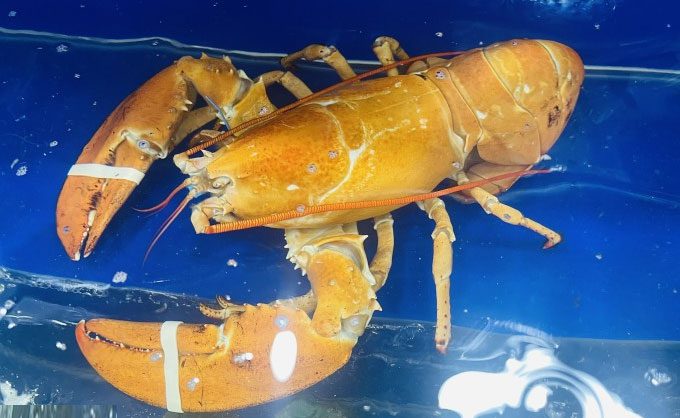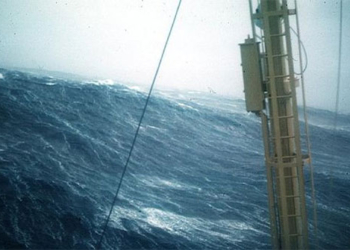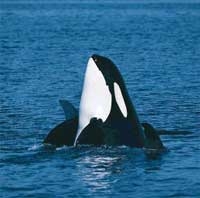A rare two-kilogram yellow lobster was found among a shipment imported from Canada to Vietnam.
Mr. Tran Van Truong, CEO of Hoang Gia International Seafood Trading Company, reported the discovery of a yellow lobster in a shipment arriving in Vietnam on the morning of July 1.
This lobster weighs two kilograms and measures 55 cm in length (including its claws). “It was the first time I had seen a yellow lobster. I thought it was already cooked. However, upon inspection, I discovered it was a rare species and had the staff display it at the seafood store on Nguyen Van Linh Street, District 7,” Mr. Truong stated.

The yellow lobster displayed at the seafood store on Nguyen Van Linh Street, District 7, Ho Chi Minh City. (Photo: Linh Dan).
According to the manager at the seafood store in District 7, after displaying the lobster, a customer offered 150 million VND to purchase it, but the store declined the sale. Mr. Truong mentioned that the yellow lobster will be donated to the Nha Trang Institute of Oceanography for research purposes.
An expert on lobsters in Nha Trang assessed that Alaskan lobsters with yellow coloration are quite rare and have never been recorded in Vietnam. The Nha Trang Institute of Oceanography has also never studied a lobster of this color. This is among the rarest lobster species in the world, with a natural occurrence rate of 1 in 30 million.
According to fishermen who catch lobsters, those with yellow shells tend to stand out, making them easy targets for predators. Consequently, the survival rate of such brightly colored lobsters is quite low.
Previously, the Canadian embassy shared with the press that most lobsters are typically blue-green, with very few being yellow or turquoise. Currently, Vietnam is the largest consumer of Canadian lobsters in Southeast Asia, and the export of Canadian lobsters to Vietnam has seen double-digit growth in recent years.
Globally, yellow lobsters are caught in very rare quantities. In the United States last year, fisherman Marly Babb caught a yellow lobster in Tenants Harbor in the Gulf of Mexico. He later donated the lobster to the Marine Science Center at the University of New England.
Research indicates that the probability of catching a blue lobster in the wild is 1 in 2,000,000, while the chance of encountering a yellow lobster is 1 in 30,000,000. Both blue and yellow lobsters result from a genetic mutation affecting the protein that binds to red pigments.
In addition to the yellow lobster, in March, a turquoise Canadian lobster was also discovered among a shipment from Canada to Vietnam. This lobster was subsequently donated to the Nha Trang Institute of Oceanography for research.





















































